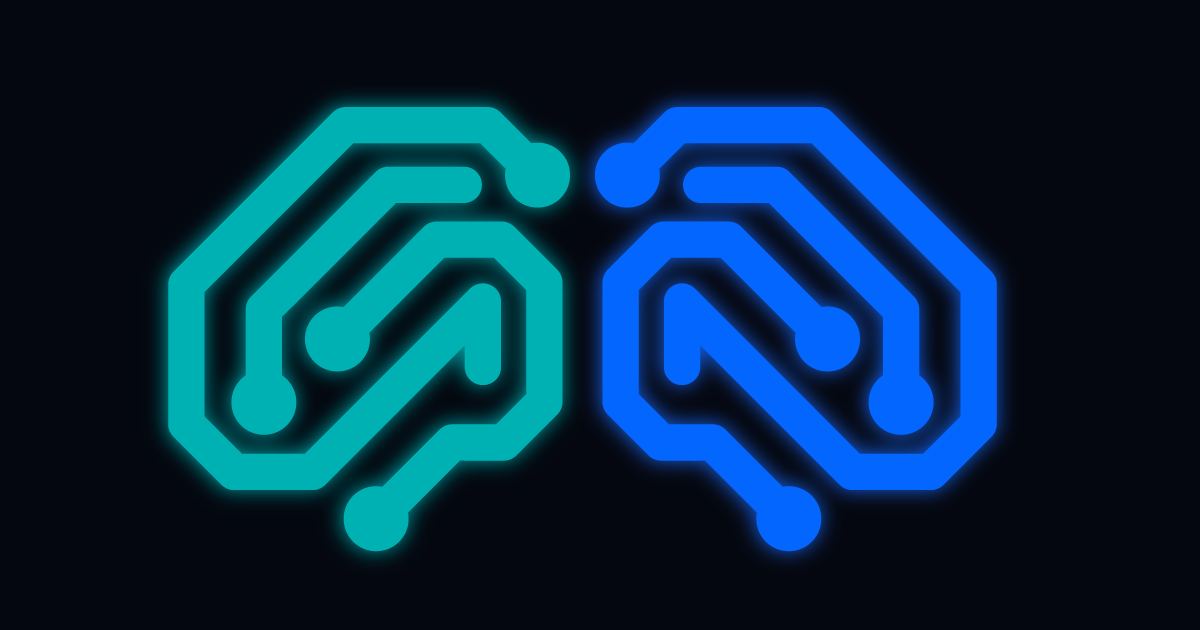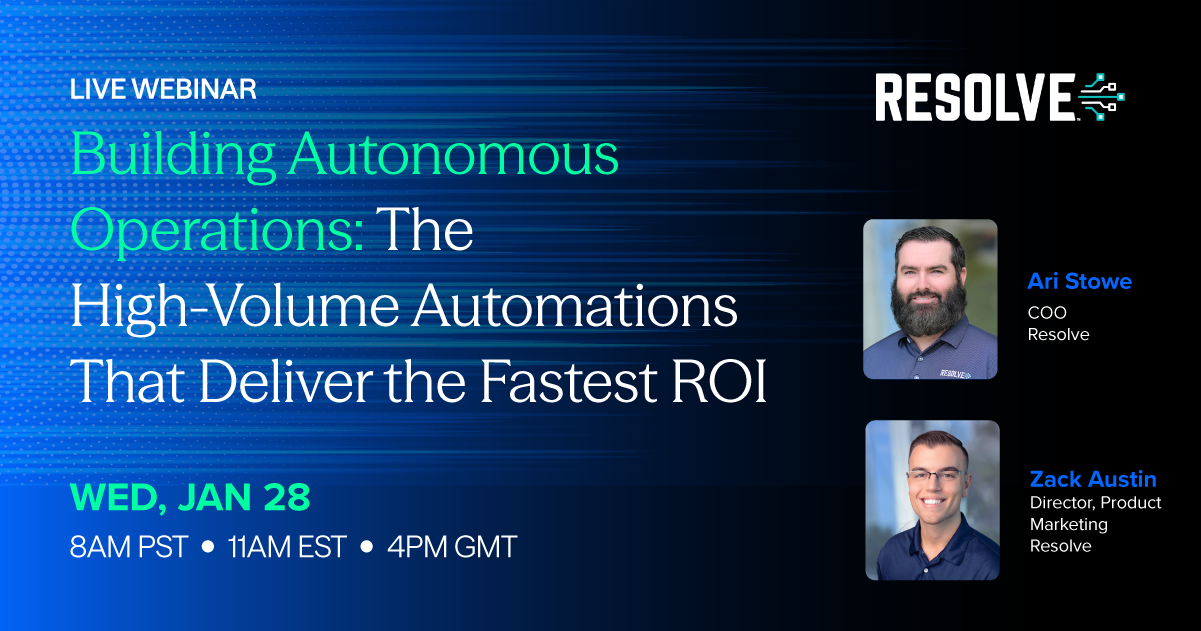
Invisible IT: The Best Technology You’ll Never Notice
Subscribe to receive the latest content and invites to your inbox.
What Invisible IT Means in Contemporary Enterprise
“Invisible IT” might sound like a marketing slogan, but it captures something every IT leader has quietly wanted for what feels like eons: a world where technology does its job without slowing anyone down. A world where support is proactive instead of reactive and where digital friction disappears before employees ever feel it.
Invisible IT is about removing interruptions without disappearing IT teams. It’s a model where systems detect issues early, understand what’s happening, decide on the right action, and execute it automatically. IT is the backstage orchestrator of a seamless, reliable environment that boosts employee experience. Meanwhile, the C-suite sees operations stabilize in profound ways.
Most organizations talk about invisible IT as an abstract ideal, but with modern AIOps automation and agentic intelligence, it’s finally achievable!
What Is Invisible IT and Why Does It Matter Now?
Why employees only notice IT when it’s broken
Technology is at its best when it fades into the background, but unfortunately, most IT environments are not quiet. They interrupt workflows, slow down applications, break during handoffs, or send alerts at the worst possible time. When employees interact with IT, it’s usually because something broke. It’s often a frustrating experience for everyone.
Invisible IT flips this dynamic. Instead of users discovering issues, the system resolves them before the user ever feels the impact. This concept is fundamental to leading solutions like our Agentic Resolution Fabric, and to achieving the continuous improvement IT teams need in order to make a difference for the entire enterprise.
Why the enterprise is shifting toward proactive, anticipatory IT
Between multiplying signals, dependency sprawl, and a host of other obstacles, modern environments are too complex for reactive operations. Human interpretation cannot scale with this reality, which is why IT environments are often noisy despite dedicated teams’ very best efforts.
Leadership teams know this. And hopefully, that means they’re asking for fewer disruptions instead of more dashboards.
The real goal is eliminating friction, not visibility
Invisible IT aligns with executive priorities: reduced downtime, better employee experience, predictable operations, and cost control. In short, IT should be a source of stability instead of a source of noise.
Why Traditional Tools' Attempt at Invisible IT was Doomed from the Start
Fragmented ecosystems make context impossible to assemble manually
Most enterprises rely on dozens of operational tools. Each holds part of the truth, but none holds enough to resolve an issue on its own. Humans have to bridge those gaps manually, and the result is predictable: slow MTTR, inconsistent outcomes, and escalating complexity.
Observability without action is just faster bad news
Traditional AIOps excelled at showing you what was happening. It correlated alerts and presented anomalies neatly. But it still required humans to interpret the signals and choose next steps.
Pointing out that someone’s house is on fire doesn’t put out the flames.
Script-based automation is too brittle to operate autonomously
Runbooks and domain-specific workflows helped reduce toil, but they couldn't interpret changing environments. They broke when APIs changed or when signals deviated from expected patterns. They could execute, sure. But they couldn’t quite think for themselves.
Invisible IT needs a system that reasons and does so in a guardrailed but independent way.
READ MORE: The IT Automation Solution That Resolves Problems for You
Wishful Thinking Can’t Power Invisible IT; So What Does?
Agentic reasoning: understanding what’s happening in real time
Invisible IT requires comprehension, not 'just' detection. Systems must interpret telemetry, understand dependencies, recognize anomalies, and determine whether an issue is real or noise.
This is the first step toward true autonomy.
Autonomous execution: performing the fix without waiting for humans
If a problem is predictable and well-understood, the system should handle it. Invisible IT depends on automated remediation that is safe, governed, and fast. Humans intervene only when their judgment is required.
Closed-loop learning: getting smarter with every incident
The system must reuse past resolutions, recognize recurring patterns, and improve over time. Every solved problem becomes fuel for the next one.
Invisible IT evolves, and it doesn’t have to wait on time-consuming, human-driven remediation to do so.
How AIOps Automation Enables Invisible IT
Invisible IT becomes real when AIOps automation closes the gap between insight and action.
From detection to decision: shrinking the gap humans used to fill
In most organizations, the slowest part of incident response is triage. AIOps automation collects logs, reviews telemetry, checks device state, compares historical patterns, and rules out false positives. It then assembles the context automatically.
The system moves work upstream of the ticket.
From decision to action: automating the entire operational flow
Once the context is assembled, the system either recommends or executes the action. It can restart services, reallocate resources, roll back changes, remediate configuration drift, validate network paths, or perform hundreds of other tasks autonomously.
Human time and effort shifts from manual execution to maneuverable oversight.
From action to learning: self-improving operational intelligence
The system becomes more resilient with every resolution. It knows what worked, what didn’t, and what it should try next time. This is how invisible IT sustains itself.
What Invisible IT Looks Like in High-Performing Enterprises
Issues resolved before users notice anything happened
When automation interprets signals and acts immediately, the incident never hits the employee. The digital experience stays crisp. Meanwhile, productivity goes up while frustration goes down.
Tickets that write themselves (and barely ever appear)
In the conventional model, tickets mark the beginning of investigation. In invisible IT, the ticket marks the end: a record of a resolved issue, complete with telemetry, causal analysis, and actions taken.
The only tickets that reach humans are the ones that should!
Self-service that actually works
Employees get instant responses because the system already knows what to do. Password resets, access requests, device checks, VPN fixes, and dozens of repetitive tasks become self-resolving.
Alerts reaching humans only when judgment is required
Noise disappears and signals become clear, all while operators see only what matters.
This is how engineering time becomes not ‘just’ strategic, but fulfilling!
READ MORE: The Hidden Side of AI: Building a Smarter Enterprise AI Solution
Business Outcomes CIOs Can Expect from Invisible IT
Reduced operational drag and fewer interruptions
Less friction means better productivity. Processes stay unblocked and IT becomes an enabler instead of a bottleneck.
Faster MTTR and fewer outages
Context arrives pre-assembled and remediation begins instantly, lifting the organization up as a whole. Incidents stabilize earlier, while outages become rarer and less severe.
Improved IT economics and budget predictability
Less manual escalation, fewer firefights, and operations that become much more predictable. Opex trends downward and becomes easier to defend.
IT’s perception shifts from cost center to strategic advantage
When IT becomes invisible, it also becomes invaluable!
How to Evaluate Technologies Claiming to Deliver Invisible IT
Can the system interpret signals across your entire ecosystem?
Invisible IT requires unified awareness of ITSM, monitoring, cloud platforms, network systems, identity, and endpoints.
Can it execute remediations safely without human intervention?
Look for governed automation, guardrails, auditability, and domain-spanning orchestration.
Can it learn from every incident and improve autonomously?
Static automation and manual remediation cannot sustain invisible IT. Learning is the foundation.
Can it eliminate noise rather than simply accelerate alerts?
Invisible IT requires fewer signals.
Where Resolve Fits in the Invisible IT Landscape
The Agentic Resolution Fabric is the engine behind Invisible IT
Resolve’s platform unifies Knowledge, Automation, and Assist Agents to detect, interpret, act, and learn inside one continuous intelligence fabric.
AIOps automation + agentic intelligence = true operational autonomy
Resolve closes the loop between anomaly and action. It enriches every signal automatically, performs safe remediation, eliminates noise, and learns with each interaction.
The result is technology that quietly works the way IT always intended
Invisible IT is not a dream or a PR phrase. It is a reality powered by agentic automation.
FAQs About Invisible IT
What is Invisible IT?
Invisible IT refers to technology and automation that operate proactively in the background, resolving issues before employees notice them.
Does Invisible IT reduce IT jobs?
No. It reduces interruptions instead of eliminating expertise. IT teams shift from firefighting to strategic modernization.
How is Invisible IT different from AIOps?
AIOps surfaces insights. Invisible IT requires AIOps plus autonomous action, learning, and closed-loop resolution.
Can any enterprise achieve Invisible IT?
Yes, but only with a platform capable of unified context, agentic reasoning, and autonomous remediation.
What technologies power Invisible IT?
AIOps automation, agentic AI, orchestration, and integrated systems that learn from every operational outcome.
Invisible IT is Autonomous IT Finally Working as Designed.
Invisible IT is the operational model where systems handle the work humans should never have had to do. Issues resolve themselves while alerts behave. Employees stay productive. And IT becomes a strategic engine for the entire enterprise.
The only question is how long your organization wants to wait before your IT becomes invisible too.






